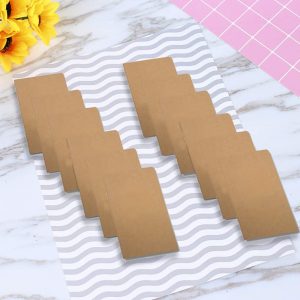1. Define the Purpose: Understand the purpose of your booklet. Is it informational, promotional, instructional, or something else? This will guide your design choices.
2. Plan Content Hierarchy: Organize your content into sections or chapters. Determine the hierarchy of information, from main headings to subheadings and body text. This helps readers navigate the content easily.
3. Choose a Layout Size: Select a suitable size for your booklet, such as A5, letter, or square. Consider how the size will affect readability and the overall feel of the booklet.
4. Set Up Margins and Bleeds: Define margins to ensure your content is comfortably within the printable area. If your design includes images or colors that extend to the edge of the page, add bleeds to prevent any white borders after trimming.
5. Typography: Choose fonts that are legible and align with the tone of your content. Use a consistent font hierarchy with different styles for headings, subheadings, and body text.
6. Color Palette: Select a cohesive color palette that reflects the booklet’s theme and resonates with your audience. Limit your color choices to maintain a visually harmonious design.
7. Cover Design: Create an eye-catching cover that introduces the booklet’s theme or topic. Use engaging visuals, bold typography, and a clear title to grab the reader’s attention.
8. Page Numbers and Navigation: Include page numbers for easy reference. If your booklet is longer, consider adding a table of contents or section dividers for smoother navigation.
9. Visual Elements: Incorporate images, illustrations, icons, and graphics that enhance the content. Make sure visuals are relevant and don’t overwhelm the text.
10. Consistent Branding: If the booklet is associated with a brand, maintain consistent branding elements such as logos, colors, and typography throughout the design.
11. Clear Headings and Subheadings: Use clear and descriptive headings and subheadings to guide readers through the content. Headings should provide a quick overview of what each section covers.
12. White Space: Allow for sufficient white space around text and images. This enhances readability and makes the design feel less cluttered.
13. Text Alignment and Formatting: Choose a consistent text alignment (left, center, or justified) for a polished look. Use formatting tools like bold, italics, and bullet points to highlight key information.
14. Grid and Columns: Consider using a grid or column layout for a structured and organized appearance. This helps maintain a consistent flow throughout the booklet.
15. Call to Action (if applicable): If your booklet has a specific goal, include a clear call to action on relevant pages to prompt readers to take the desired action.
16. Proofread and Review: Thoroughly proofread all text for errors. Review the overall design for coherence, consistency, and visual appeal.
17. Print or Digital Considerations: Decide whether your booklet will be printed or distributed digitally. Adjust your design accordingly, considering factors like resolution, file formats, and interactive elements.
Creating an effective booklet design requires a balance of creativity and functionality. Keep your target audience in mind, focus on delivering the intended message, and ensure that your design enhances the overall reading experience.


























